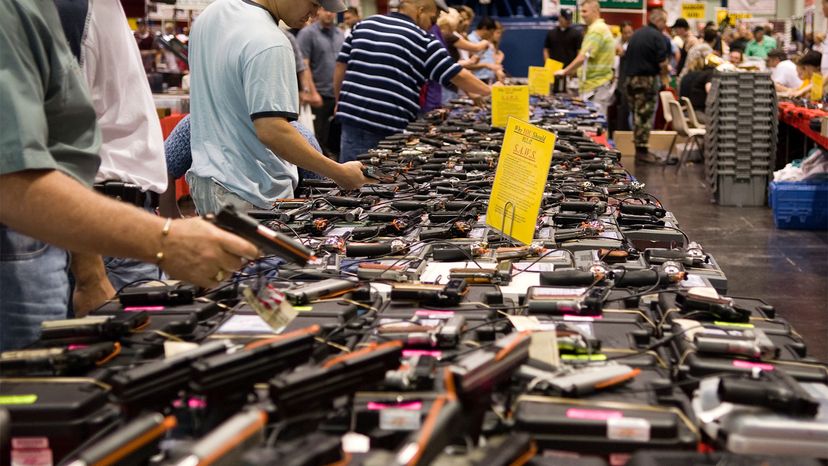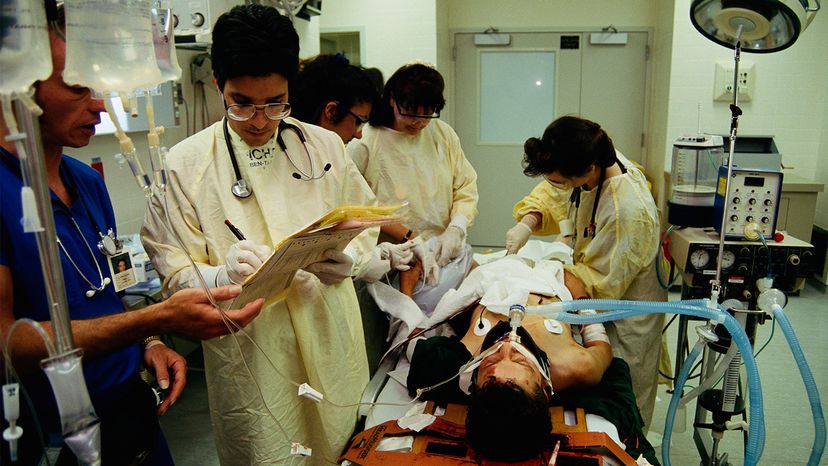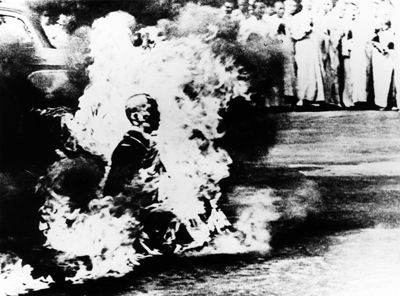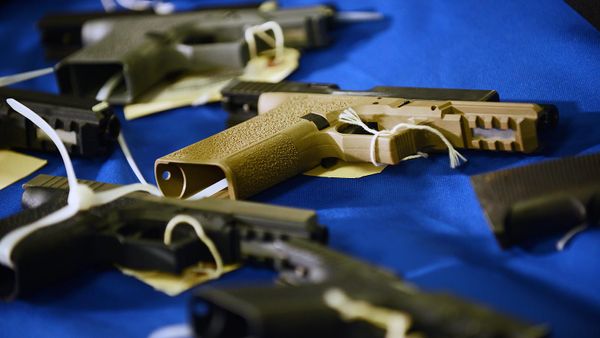
More than 10.6 million pistols, revolvers, shotguns, rifles and misc. firearms were manufactured in the United States in 2020 [source: Bureau of Alcohol, Tobacco, Firearms and Explosives]. In 2019, firearms were used in 14,414 homicides [source: CDC]. And a Geneva-based Small Arms Survey found that in 2017, United States civilians held almost 40 percent of the world's firearms, with about 121 firearms for every 100 residents in the U.S. The research group found that of the 857 million civilian-held firearms worldwide, 393 million are in the U.S., which is more than civilians have in the other top 25 countries combined.
With all of these guns, it may seem like the chances of being shot are pretty good. In 2015, Americans had a 1 in 315 chance of being killed by a gun, based on the population and number of assaults by gun [source: Mosher and Gould]. So if someone near you pulls out a gun, what should you do?
Advertisement
Ed Sizemore, a lead instructor at the Federal Law Enforcement Training Center's Firearms Division, says that for the average bystander, retreat is the best idea. If that isn't possible, Sizemore says, take cover. Hiding behind an object that can absorb the force of the rounds is a good idea. So, too, is getting down on the floor, which presents a smaller target for a shooter.
Sizemore tells his law-enforcement students to orient their bodies toward the threat. Most people doing the shooting tend to aim for the easiest target — the torso. Since police officers wear body armor, they have the most coverage in front and back. He would not, Sizemore makes a point to add, recommend the same thing to any civilians.
In Sizemore's opinion, there's no single best place to be shot. Ballistics — the study of the projectiles, like bullets — is too much of a gamble. "People get shot in fatal areas and live, and others get shot in non-lethal areas and die," he says. But he believes the most painful place to be shot would be in your pelvis. The nerve bundle located there would quickly and efficiently distribute pain throughout your body. He can also think of a worst place, medically speaking: "The brain," he says. "Hearts can be repaired. There is such a thing as an artificial heart. But as far as I know there are no artificial brains."
But the brain isn't necessarily the most lethal place to be shot. Patients with gunshot wounds to the head have a 42 percent chance of surviving, according to a study from 2000 to 2013 of more than 400 patients at two level 1 trauma centers [source: Muehlschlegel].
But if you are ever faced with a choice of where to take a bullet — say, a choice given to you by an angry loan shark — where should you take it?
Advertisement



